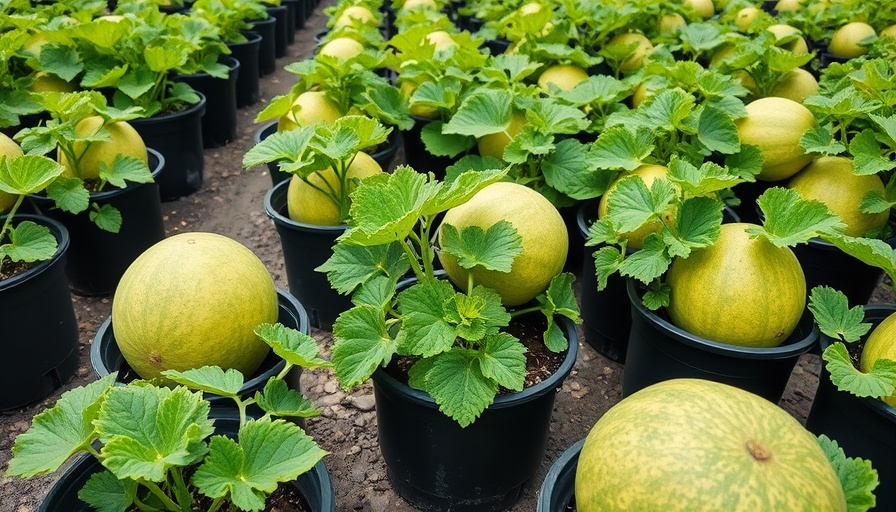
Why Container Gardening? Unleash Cantaloupe's Sweet Potential
Whether you're a city dweller with limited outdoor space or simply want to avoid the hassle of a sprawling bed, growing cantaloupe in containers is a game-changer! Just think—a sweet, succulent melon ripened right on your patio or balcony. The beauty of container gardening lies in its flexibility; you can control your plants more easily, keep them safe from pests, and even relocate them to escape extreme weather conditions.
Essential Preparation: Choosing the Right Container
Begin by selecting a container that’s at least 5-10 gallons. A larger size ensures your cantaloupe has ample room to thrive. Look for containers made of materials that insulate well—terra cotta is great, but ensure your melons won't dry up too quickly. Don’t forget about drainage holes; these are crucial for keeping plants healthy and free from waterlogged soil.
Optimal Condition: Temperature and Site Selection
Cantaloupes adore warmth, thriving best in temperatures between 70°F and 90°F. If you live in a cooler area, start seeds indoors or bring your plants inside at night. Conversely, if you're in areas prone to extreme heat, be vigilant! Offering shade during the hottest parts of the day can prevent damage to your developing melons. Consider using lightweight row covers or shade cloths during peak hours.
Picture Perfect: Cultivating Cantaloupe Varieties
Not all cantaloupe are created equal. For container gardens, dwarf varieties like the ‘Sugarcubes’ or ‘Hale’s Best’ are marvelous choices. These cultivars are bred for robust flavor and compact growth, perfect for a space-saving garden without compromising on the sweet deliciousness that cantaloupe is known for.
Tips for Container Care and Pest Management
Keep your cantaloupe plants healthy with regular, balanced feeding. Organic fertilizers provide nutrients without the harsh chemicals that could endanger beneficial insects. Pay close attention to pest warnings; aphids and cucumber beetles are particularly common nuisances. Regularly inspecting plants and employing companion planting—like marigolds—can provide a natural pest deterrent.
It’s Harvest Time! Enjoy Your Fresh Cantaloupes
When your cantaloupe melons start emitting that sweet, musky smell, it's prime time for harvest! Typically, they will be ready between 70-90 days after planting, depending on variety. Check for a slight color change towards the bottom, and gently press with your thumb; if it yields a little, it’s time to pick and enjoy. Fresh melons can be cumbersome; cut them stalk first with a few inches left attached, and savor the fruits of your labor in your favorite summertime recipes.
Take Action: Grow Your Own Indoor Cantaloupe
Feeling inspired? Don’t let limited space or zoned weather hold you back from growing your own delicious cantaloupe! Start your journey to self-sufficiency today by grabbing some seeds, a container, and those gardening gloves. Embrace the rewarding experience of cultivating your food right at home, even if it's on a small balcony.
 Add Row
Add Row  Add
Add 




 Add Row
Add Row  Add
Add 

Write A Comment